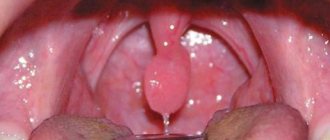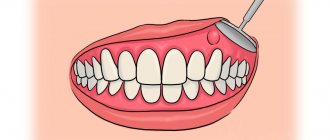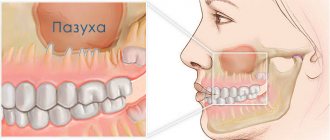Scroll to top
Sinusitis is an infectious and inflammatory disease, the lesion in which is localized in the area of the maxillary sinus. One of the main manifestations of this pathology is swelling. It leads to nasal congestion and a pressing, painful sensation in the bridge of the nose.
Causes of swelling
The maxillary (or maxillary) sinuses are located under the eyes in the thickness of the upper jaw[1]. The entrance to the sinuses is located on the lateral walls of the nasal cavity. The mucous membrane covers the paranasal sinus from the inside. It is necessary for a complete outflow mechanism. The production of mucus in all paranasal sinuses is considered normal. It is necessary to absorb pathogens or solid foreign particles and further remove them from the nasal cavity.
The mucosa consists of multirow epithelium with mobile cilia[2]. They constantly drain fluid from the sinuses. The hole for this is located in the upper part of the sinuses. The process is practically impossible if the mucus secretion mechanism is disrupted. Also, the anastomosis (opening) itself, connecting the sinus with the nasal cavity, has its own mucous membrane. If it swells, then this hole becomes narrow, and the outflow of mucus through it occurs with great difficulty.
If a person is completely healthy, then all of the listed mechanisms work very harmoniously. In this case, sinusitis simply cannot develop. But if an inflammatory process occurs in the nasal mucosa, then not only it swells, but also the mucous membrane of the adjacent anastomosis and maxillary sinus. As the mucous membrane swells, the gap between the sinus and nasal cavity gradually closes.
When the mucous membrane swells greatly and the anastomosis narrows, the maxillary sinus becomes completely cut off from the nasal cavity[3]. Under such conditions, pathological changes occur in it: hypoxia sets in, pressure increases, and the active production of mucus continues, which has nowhere to go due to impaired outflow, so it stagnates in the sinuses. Over time, a strong inflammatory process develops, and the contents of the sinuses become purulent.
What other complications of sinusitis can there be?
Secondary complications are possible . These include narrowing of the upper airways during sleep, which leads to snoring and stopping breathing during sleep (sleep apnea).
Tumors can also be a complication of sinusitis, especially rhinosinusitis (sinusitis with concomitant inflammation of the nasal mucosa). With chronic sinusitis, there is a slightly higher level of development of malignant tumors in the soft areas of the nasopharyngeal space (nasopharyngeal carcinomas). But more often benign formations (polyps) form.
Transition to a chronic form of sinusitis
Acute sinusitis (sinusitis) can develop into a chronic form. Chronic sinusitis occurs when the disease lasts more than six weeks or recurs several times a year. This always returns the patient to headaches, cold symptoms and other manifestations of this disease. Treatment with conventional means such as rinsing or antibiotics usually ceases to be successful. And surgical treatment is already being prescribed.
There is a proven connection between chronic sinusitis and the development of other diseases, such as pneumonia, asthma, COPD and stroke.
Therefore, do not delay visiting the ENT doctor, get treatment on time. Sincerely, otorhinolaryngologist surgeon Ph.D. Boklin A.K.
PDF version: https://boklin.ru/pdf/tchem-opasen-gaymorit-ili-oslozhneniya-verhnetchelyustnogo-sinusita.pdf
Types of sinusitis
There can be many reasons that provoke the appearance of sinusitis. Depending on this, it is divided into types [4]:
- traumatic - occurs as a result of experienced trauma;
- polypous - develops with the formation and recurrent growth of polyps in the nasal sinuses;
- allergic - occurs upon contact with allergens;
- vasomotor - provoked not by the classical inflammatory process, but by functional disorders.
- odontogenic - provoked by dental pathologies [5].
Sinusitis can be unilateral, occurring in one maxillary sinus, or bilateral, affecting both maxillary sinuses. Sinusitis is also divided into acute and chronic.
Acute sinusitis
According to the type of inflammation, there are 2 types of acute sinusitis [6]:
- Catarrhal. With this type of disease, there is no pathological content in the sinuses - pus. The patient experiences inflammation of the nasal mucosa, severe swelling, and the release of exudate (liquid) from the nasal passages. Sometimes there is a slight heaviness and swelling in the cheek area under the eyes.
- Purulent. This bacterial type of pathology is characterized by the accumulation of pus in the maxillary sinuses. The patient should be alert to: headache and facial pain, discomfort in the area of the root of the nose, a feeling of pressure on the teeth, and a night cough.
Acute catarrhal sinusitis often ends in complete recovery. But it is possible that it may be complicated by the addition of a bacterial infection and develop into acute purulent sinusitis.
Chronic sinusitis
Chronic sinusitis is an inflammation of the mucous membrane of the maxillary sinuses, which continues for 3 months or more. Depending on the pathological changes in the mucous membrane, the chronic type of this pathology is divided into subtypes: catarrhal, purulent, polypous or cystic, as well as mixed [7].
The first signs of inflammation of the maxillary sinuses
If you do not attach importance to the common cold and do not treat rhinitis (runny nose), then viral sinusitis or bacterial sinusitis will appear as a complication, depending on what caused the disease.
You should contact your doctor immediately if you experience the following symptoms:
- copious nasal discharge of yellow-green color;
- general weakness, fatigue;
- constant headache;
- high body temperature (above 38ºС);
- nasal congestion, nasal tone;
- you have difficulty breathing through your nose;
- reduced or absent sense of smell.
How to relieve swelling from sinusitis: safe ways
Many people are very afraid of punctures and are interested in how to relieve swelling of the maxillary sinuses in more gentle ways. A good alternative to puncture is the YAMIK sinus catheter [8]. This device was developed by Yaroslavl specialists - G.I. Markov. and Kozlov V.S. During therapeutic manipulation, the mucous membranes are not injured and the bone structures of the nasal cavity are not damaged.
With this procedure, it is possible to restore normal communication between the sinus and nasopharynx, as well as locally administer antibiotics or antiseptics. The principle of operation of such a catheter is to seal the nasal cavity and create negative pressure in it.
After inserting a thin catheter into the nasal cavity, the patient's pressure changes, which eliminates swelling and improves local blood circulation. As a result, the functionality of the ciliated epithelium is restored, and the pathological contents from the sinuses are easily removed[9]
Why can complications arise from sinusitis?
As a rule, with respiratory diseases (ARVI, influenza, etc.), inflammatory changes occur in the paranasal sinuses, but they (paranasal sinuses) are restored as soon as the runny nose (rhinorrhea) subsides. Severe complications are quite rare with acute sinusitis. However, there is a risk, especially if sinusitis is not diagnosed and treated promptly.
Complications occur mainly in children and the elderly. But people with weakened immune systems are also at risk. This kind of “immunodeficiency” can have many causes. As a rule, these are already existing diseases of the nasopharyngeal region and maxillofacial apparatus.
If the connections (ostia) between the paranasal sinuses and the nasal cavity are closed, there is no ventilation, and pathogenic microorganisms continue to multiply. Since the discharge cannot flow normally from the sinuses, a purulent focus of inflammation occurs, which causes headaches and severe discomfort.
Increased risk of secondary infection
When congestion occurs in the sinuses, there is a risk of “superinfection,” or secondary infection. This is the result of other pathogens that contribute to inflammation in addition to the existing acute sinusitis. Most of them are bacteria, sometimes fungi. In the case of such a process, there is an increased risk of severe disease.
Spread of inflammation
Sinusitis can spread to other tissues, especially if caused by bacteria. These include inflammation of the periosteum and soft tissues near the site of infection. For example, inflammation of the upper jaw (maxillary osteomyelitis) may occur.
Serious consequences occur when inflammation breaks through the bone into other areas of the skull. Such complications may include meningitis or encephalitis . Although rare, they are potentially fatal in most cases.
Signs of encephalitis or meningitis include severe headache, irritability, fatigue, or photophobia. Serious signs of complications include stiffness of the neck muscles and blurred vision in such cases requiring immediate treatment in a hospital.
Also, the formation of abscesses in the brain as a result of the penetration of microbes and pus (delimited foci of inflammation) is a life-threatening condition. When infection penetrates, convulsions, nerve paralysis and the formation of dangerous blood clots (cavernous sinus thrombosis) are possible.
Spread of inflammation to the orbit – more common in children. Purulent inflammation of the orbit (cellulitis) must be treated as soon as possible. Signs of orbital inflammation include redness and swelling of the eyelids, and a swollen area around the eyes.
Sinusitis, like any sinusitis, can cause sepsis if the course is complicated. This is a life-threatening process that occurs as a result of inflammation spreading in the bloodstream. Most cases of sepsis are caused by bacterial infections.
Taking antibiotics
To treat sinusitis, groups of antibiotics are more often used[10]:
- penicillin series in combination with clavulanic acid;
- cephalosporins;
- macrolides.
For local therapy, antibiotics from the aminoglycoside group are prescribed. As a result of complex therapy, it is possible to overcome infection, reduce inflammation and swelling, restore nasal breathing, and alleviate the general condition of a person.
Anti-inflammatory drugs
Glucocorticosteroids are popular among otolaryngologists. They have the following effect[11]:
- suppress the development of mucosal edema;
- restore the functional ability of the openings connecting the nasal cavity and sinuses;
- prevent the development of blood eosinophilia;
- reduce inflammation caused by the interaction between cells of the nervous and immune systems.
Also, in order to eliminate the inflammatory process in case of sinusitis, complex preparations based on medicinal plants can be prescribed.
Disease prevention
A few tips to help you stay healthy:
- strengthen the immune system;
- frequently ventilate the premises;
- dress according to the season;
- maintain hygiene, wash your hands when coming from the street;
- rinse your nose for prevention.
Airborne germs enter the body through the nose when breathing. Before they have time to gain a foothold and penetrate deeper, they must be mechanically removed using the Aqualor product.
Vasoconstrictors
Decongestants for sinusitis are prescribed topically: nasal drops, sprays, aerosols, gels or ointments. Among the vasoconstrictors, one can highlight the drug Xilong with two active ingredients: xylometazoline and dexpanthenol. They reduce swelling and make breathing easier, and also promote healing of the nasal mucosa. The drug is available in the form of a nasal spray. Approved for use from 6 years of age. For the little ones there is Xilong Kids - children from 2 to 6 years old.










